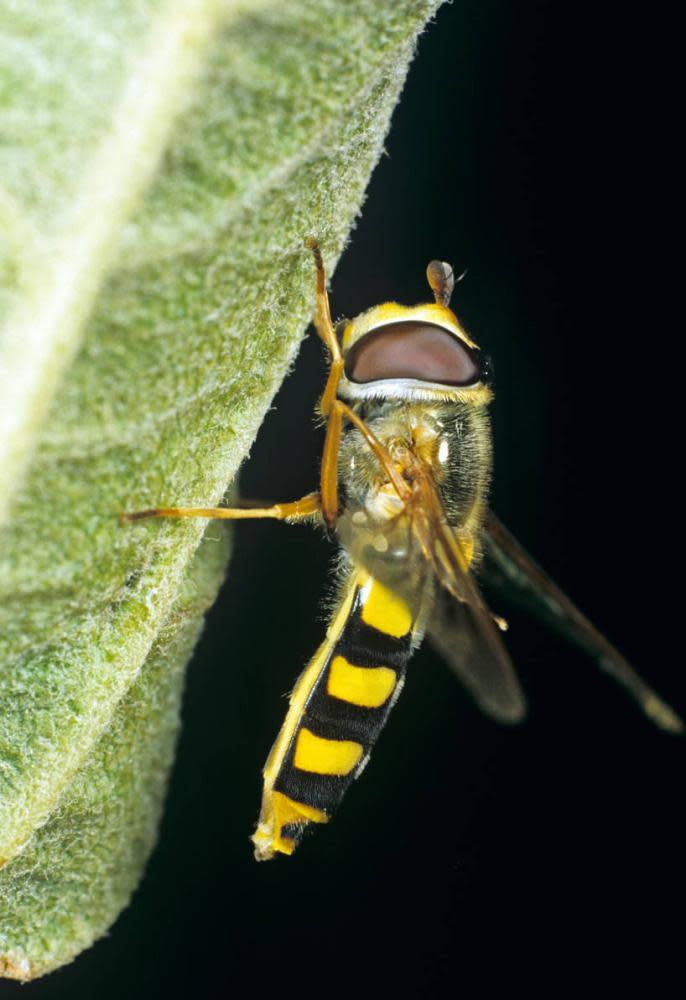How to control aphids in your garden
I’m not sure about your garden, but mine has been awash with blackfly (Aphis fabae) this year. They started on their namesake, the broad beans, hopped over the nasturtiums and are now having fun on the runner beans and numerous flowers, from chrysanthemums to dahlias. I’ve been patiently waiting for the ladybird larvae to deal with them, but they are late this year; I assume the wet winter decimated overwinter adults.
Thus my joy at finding hoverfly larvae hoovering up aphids is palpable. The larvae of the pretty, gossamer-winged hoverfly are a broad church of diners. Some like to eat plants and others are predatory, feeding on micromoth larvae, plant lice and scale insects. However, about 40% of the UK species (there are 165) like to eat a lot of aphids.

Adult hoverflies are identifiable by their compound eyes and single pair of wings with prominent veins. Unlike flies, many have black and yellow, wasp- or bee-like markings and are often furry (they are good mimics of wasps and bees) and, as their name suggests, they love to hover before alighting to drink.
The larvae aren’t as easy to spot, as they are tiny and frankly ugly. They do have one or two distinct markings, though: usually longitudinal stripes of white, yellow or brown blotches, unlike other hoverfly larvae which are pale yellowish-white. Their colouring acts as camouflage because if you are hunting aphids, you will have to move about and this puts you at risk; their markings break up their outline, making them harder for predators to see.
They add to their strange-looking aspect with an equally strange-looking dance. To prevent its prey sending off too many alarm signals, the larvae rears up its head, lifts the aphid off the leaf and pierces it. They produce sticky saliva so the aphid can’t wriggle away, and proceed to suck the life out of it.
Related: How to grow Vietnamese herbs | Alys Fowler
The larvae may want the soft, plump bodies of aphids, but the adult flies want nectar and pollen. Hoverflies dine on all sorts of flowers, from spring hawthorn to ivy in autumn. They do, however, seem to be particularly fond of umbels, so it makes sense to fill your garden with them. Perhaps the simplest way to start is to let your coriander go to seed and watch who visits.
If neither hoverflies nor ladybirds appear, the simplest way to tackle a small infestation of blackfly is to squish them with your finger and thumb. If a plant becomes heavily infested, uproot it. Once blackfly establish themselves, they multiply rapidly and are often farmed by ants that love the honeydew the aphids excrete. Ants will also remove aphid predators such as ladybirds and hoverfly, so compost the lot before they take over.


